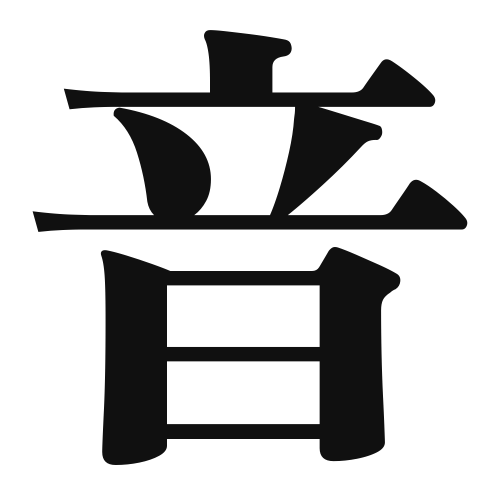1. Overview of Meaning
The kanji 音 (on) means “sound” or “noise.” It represents the concept of auditory sensations and is commonly used in various contexts related to sound.
2. Formation and Radical
The kanji 音 is a phono-semantic compound, which means it combines a phonetic component and a semantic component. The left part, 音, indicates sound, while the right part is a phonetic element that suggests its pronunciation.
The radical of 音 is 音 itself, which is used in other kanji related to sound, such as 響 (hibiki, meaning “echo”) and 響き (hibiki, meaning “resonance”).
3. Examples of Usage
Common words and phrases that include 音 are:
- 音楽 (ongaku) – music
- 音声 (onsei) – voice or sound
- 音量 (onryou) – volume
Example sentences in daily conversation:
- 「音楽を聴くのが好きです。」(Ongaku o kiku no ga suki desu.) – “I like listening to music.”
- 「この音は何の音ですか?」(Kono oto wa nan no oto desu ka?) – “What sound is this?”
4. Synonyms and Antonyms
Similar kanji with related meanings include:
- 響 (hibiki) – echo or resonance, which emphasizes the quality of sound.
- 声 (koe) – voice, which refers specifically to the sound produced by humans or animals.
Antonyms include:
- 静 (shizu) – silence or quiet, which represents the absence of sound.
5. Cultural and Historical Background
The kanji 音 is deeply connected to Japanese culture, particularly in the context of music and traditional arts. For example, 音楽 (ongaku) plays a significant role in festivals and ceremonies.
Proverbs and idiomatic expressions that include 音 are:
- 音を上げる (oto o ageru) – to give up or to cry out, often used when someone is overwhelmed.
- 音沙汰がない (otosata ga nai) – no news or communication, indicating silence or lack of information.
